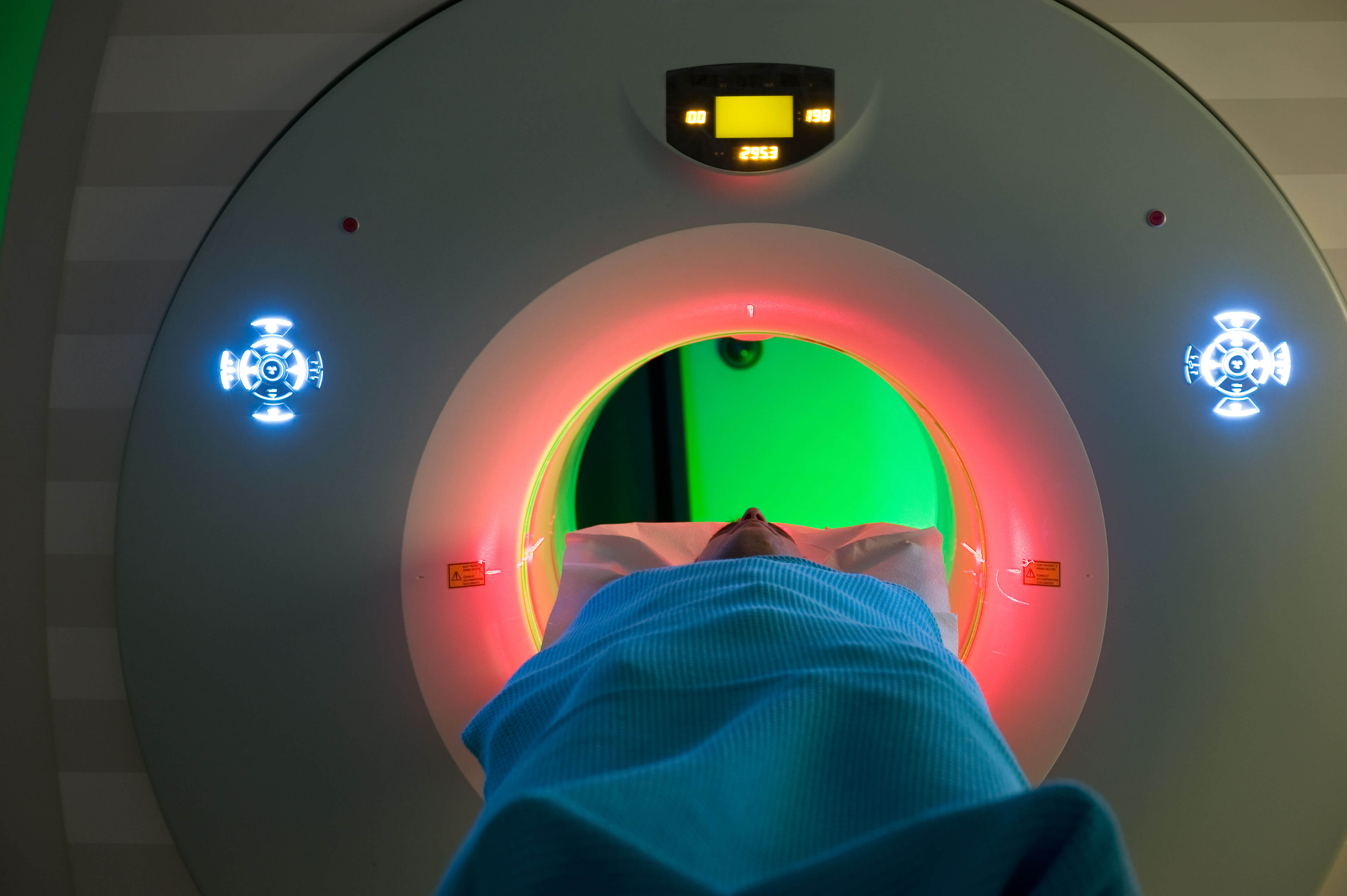-
Hospitals are amazing places filled with a variety of medical technologies. They’re all designed to help clinicians find out what’s wrong with patients and get them on the road to recovery as soon as possible.
While Superman had X-ray vision to help him save the world, there are now many different ways that doctors can look inside the body. Tim Barker of medical device consulting firm Perceptus gives us the low down on just a few.
CT scanner
Despite being discovered over 100 years ago, the humble X-ray is still useful. Modern medical imaging scanners now use X-rays to view the internal structures of the body in amazing new ways.
These computed tomography (CT or CAT) scanners take hundreds of images and combine them to form a virtual slice through the body. If a sequence of images along the body are stacked (a bit like slices in a loaf of bread), then a 3D image can be created.
A CT scanner creates images by using the fact that different parts of the body, such as bone, muscle, and fluids absorb different amounts of X-rays as they pass through the body. Because bones are much denser than other tissues, they absorb a lot of X-rays and tend to stand out brightly on CT images.
MRI scanner
Another piece of medical technology is the Magnetic Resonance Imaging (MRI) scanner. It uses a different way of seeing what’s going on inside the body.
A very strong magnetic field is generated within the large donut-shaped scanner. These magnets make hydrogen in water molecules line up with the magnetic field, a bit like iron filings do. When radio waves are applied to the body, energy is produced by the hydrogen and the signal is picked up by a receiving coil or antenna. Small differences in the water content of each body part create different signals. A computer is used to process this information and generate an image of the scanned region.
This means that MRI scanners are great for looking at many types of soft tissues, such as muscles, ligaments and cartilage, but aren’t so useful when looking at bones because they don’t contain a lot of water.
Joint replacements
Putting the Bionic Man back together relied on the use of other technology to repair and replace his broken body parts using medical implants.
Hip and knee joint replacements are now used in over 60,000 patients each year in Australia, and they are one of most successful operations performed, with nearly 95% lasting more than 10 years. Just think about that – not many moving parts in a car last that long before needing to be replaced!
Only certain types of materials can be used to withstand the large forces placed on them and to tolerate the unique environment within the human body. In a hip joint replacement, there are two parts that make up the ball-and-socket joint, with the ball usually made from cobalt chrome alloy and the socket made from polyethylene, a type of plastic. The ball sits on a stem within the femur, and it is held in place using bone cement or using a material such as titanium that allows bone to grow directly onto it.
Having to withstand millions of steps each year for many years means that improvements are always being looked for so that joint replacements last even longer.
Medical implants are also used to:
- Replace faulty heart valves with mechanical designs
- Repair damage in the spine with artificial discs
- Generate electrical signals in the heart using pacemakers
- Restore circulation in blood vessels using metallic stents
- Bring vision back to cataract sufferers with an artificial lens
- Enable deaf people to hear again via a cochlear implant
We will continue to see new technology used in many different ways to enable people to once again live happy and healthy lives.
Get to know your medical technology

-
Eat for your eyes
Some of our favourite foods to help keep your eyes healthy.
-
How is ‘phubbing’ hurting your relationships?
Here’s how to stop phubbing and be more mindful of your phone habits, to help improve face to face interactions with your family and friends.
-
Are the winter blues real?
Simple ways to boost your mood in winter.
-
Mental fitness explained
Just as you work to strengthen your body, your mental health deserves attention and exercise too.
-
The link between stress, anxiety and jaw pain
Physiotherapist Michael Chan explains how stress and anxiety can cause jaw pain, and how to help get some relief.
-
When you can't sleep next to your partner
You love everything about them – except their sleep habits.
Subscribe to receive the best from Live Better every week. Healthy recipes, exercise tips and activities, offers and promotions – everything to help you eat, move and feel better.
By clicking sign up I understand and agree to Medibank's privacy policy





.jpg)
